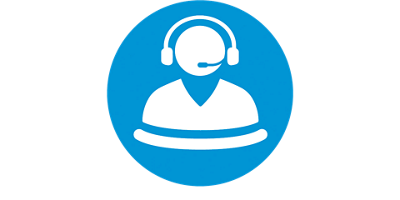Septorhinoplasty – Services and Procedure
PDF | 244.60 KB

With more than 4,000 procedures per year throughout Switzerland, septorhinoplasty is one of the most frequently performed types of plastic surgery. Whether for aesthetic or medical reasons: due to its complex anatomy, a procedure on the nose is one of the most demanding in the field of plastic, aesthetic and reconstructive surgery and should always be performed by a specialist.
Located in the centre of the face, the nose significantly influences the appearance. Form and function of the nose are closely connected. Septorhinoplasty thus consists of septoplasty, which straightens the nasal septum, and rhinoplasty, which corrects the external shape of the nose. The septum plays an important role, both in the organ’s function and its appearance. Conversely, aesthetic correction not only changes the shape of the nose, but also improves breathing function. As a result, most nose operations are a combination of functional and aesthetic nose correction.
Septorhinoplasty can generally be performed at any time. The prerequisite is that the nose is fully grown and the expectations for aesthetic procedures are clarified in advance. This ensures that reshaping nose surgery proceeds satisfactorily.
Septorhinoplasty becomes medically necessary when breathing through the nose is restricted. This can be caused by congenital misalignment of important anatomical structures such as the nasal septum, the nasal conchae or the nasal valves. An accident or cancer may also give rise to the need for correction.
Especially after a nose fracture, correction is usually unavoidable. For the first 14 days after the fracture, the nasal bone can be repositioned. An expert should always be consulted, because they know whether the nose needs surgical correction and how urgently this must be done.
Although snoring is usually caused in the mouth and throat, sometimes the cause lies in the nose. Septorhinoplasty, which mechanically improves the airways, can also reduce snoring.
First of all, the condition of the internal and external structure of the nose is assessed during preliminary examinations, which form the basis for a personal surgery plan. The procedure is almost always performed under local anaesthetic. This is done by infiltrating the nose with a combination of local anaesthetic and adrenaline supplement. This minimises the risk of bleeding and simplifies the operation.
The nose operation takes about two to three hours and can be performed on an outpatient basis. An inpatient stay is only unavoidable in cases of more complex surgery or increased risk. After the procedure, the nose is fitted with tapes and a thermoplastic splint. If surgery has been performed on the nasal septum, the surgeon also inserts silicone splints into the nose.
Depending on the condition of the nose and the reason for surgery, nose correction is performed either open or closed. For the closed technique, surgery is performed through incisions within the entrances to the nose. For the open technique, another incision is made at the bridge of the nose, the connection between the tip of the nose and the upper lip. This way, the view is more detailed and septorhinoplasty can be performed with greater precision. In time, the small scar on the bridge of the nose fades almost completely.
Besides these two methods, one more is currently being used: preservation rhinoplasty has modernised an old procedure and developed it into a gentle surgical technique. In this procedure, the nose is corrected from the inside, without having to surgically involve the structures of the entire bridge of the nose.
Medical risks and complications after nose surgery are very rare. In some few cases there may be secondary bleeding, which should be investigated by an expert. Normally, nasal swelling goes down rapidly within the first few weeks. Breathing becomes easier again and the sense of smell and taste returns to normal. Lesser swelling, especially around the tip of the nose, can last up to a year – this is normal. The scars usually heal without a trace; infections and wound healing disorders occur extremely rarely. Bruising is to be expected around the lower eyelids in particular, but this will disappear completely within two weeks.
After the procedure, the first thing to do is to promote healing and reduce the swelling. The most effective way to do this is to wear the splint consistently for two weeks immediately after septorhinoplasty. After that, the swelling can be effectively reduced with tapes applied at night. In addition to anti-swelling medication, the cheek area should be cooled daily and the upper body should always be elevated, if possible. In the first few weeks, avoid bending over, carrying heavy loads and engaging in sports activities. Spectacle wearers should avoid wearing their glasses for up to twelve weeks. Contact lenses provide an alternative; the specialist will advise on the options. The patient can return to work and social life without any restrictions after one to two weeks.

Contact Hirslanden International; we will assign you a personal case manager

A medical specialist will make an initial assessment based on your medical documentation and images of your face

Quote for a consultation (60 min.) including a digital simulation of your new nose

Consultation via Skype / FaceTime / WhatsApp and planning of the next steps

Preparation of a quote for the medical services and any additional services

Hirslanden International assists with the organisation of additional services (interpreter, transfers, hotel, etc.)

Travel to Switzerland

The day before the surgery: Check-in to your hotel, consultation at the doctor’s office, overnight stay at your hotel

The day of the surgery: Transfer to the hospital, septorhinoplasty at Klinik Im Park, overnight stay at the surgical centre or at your hotel (depending on your condition)

Follow-up checks at the doctor’s office after 2 days / 1 week / 2 weeks

You may return home 2 weeks after the surgery

Follow-up check via Skype / FaceTime / WhatsApp

Consultation: CHF 300 (amount will be deducted from the overall costs if you decide to proceed with the surgery)
Septorhinoplasty: from CHF 14 900
Additional services: as required